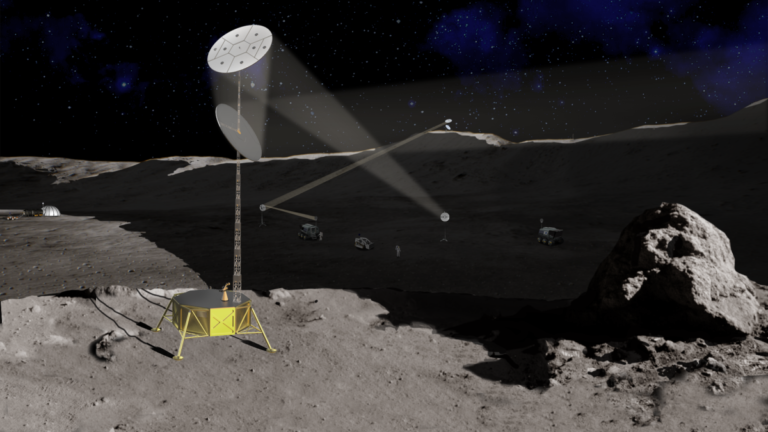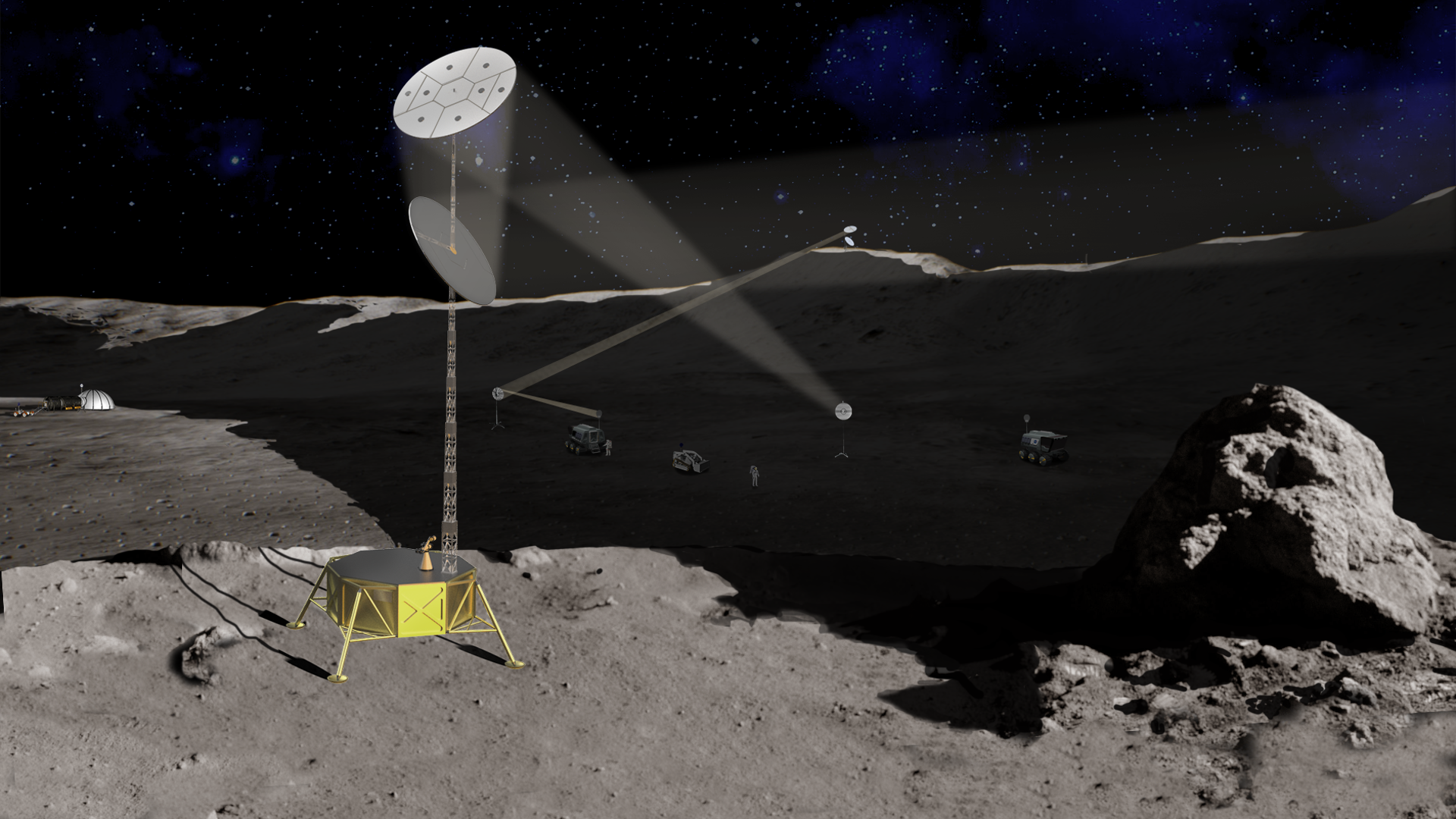
[ad_1]

A new undertaking from space technology company Maxar will use mirrors to autonomously track and reflect sunlight to supply energy to solar-powered equipment operating in the shadows of the moon’s cliffs and craters.
NASA has set the goal to land astronauts near the moon’s south pole by 2025 as a part of the agency’s Artemis program. The moon’s south pole is rich in resources such as water ice, but also experiences long periods of little to no sunlight. These conditions make energy production difficult, leaving few options to recharge batteries and maintain life-support, especially when using solar power.
A new Maxar project known as Light Bender aims to remedy that by using autonomous mirrors that will automatically reflect light towards essential equipment that Artemis astronauts might carry with them into permanently shadowed regions on the moon’s surface.
Related: NASA’s Artemis program: Everything you need to know
“Part of what we’re doing is conceptually simple, reflecting sunlight to a solar panel located in the dark,” said Maxar Chief Robotics Architect and lead for Light Bender Sean Dougherty in a Maxar statement. “Where it gets complex is doing that without humans involved. We’re leveraging investments in autonomy to study how NASA can use robots to assemble and deploy a set of reflectors that keep sunlight focused on a solar panel operating in the shadows. It’s never been done before.”
Light Bender works by hoisting two 33-foot (10-meter) reflectors up a 65-foot (20-meter) telescoping mast. One mirror autonomously tracks the sun and reflects that light to the second mirror, which then reflects those rays towards the intended solar panels.
The Light Bender project is a collaboration between Maxar and NASA’s Langley Research Center, and is scheduled for its first terrestrial demonstration in 2025. The company was awarded the contract in May 2023, under NASA’s Announcement of Collaboration Opportunity Program. For their part, NASA’s team is responsible for Light Bender’s structural design, and Maxar is taking the lead on the robotics — an aptitude for which the company has demonstrated in the past.
Maxar was behind the robotic arm on NASA’s Perseverance rover, and has extensive background with satellite manufacturing and on-orbit assembly technology development.
Given the size of Light Bender’s mirrors, Maxar also intends to assemble them once in space. Dougherty says autonomous robotics will have a crucial role in establishing the infrastructure needed for long-term lunar exploration. “We don’t currently have construction crews on the moon or Mars, so robots will have to step in. By using these technologies to build infrastructure, robotics increase human safety and reduce the amount of people it takes to accomplish missions.”
Artemis 3 will be the program’s first crewed mission to the lunar surface, and will target the moon’s south pole. The mission is slated to reach the moon no sooner than 2025. Artemis 2, meanwhile, is scheduled to send a crew of four around the moon and back in November 2024.
[ad_2]